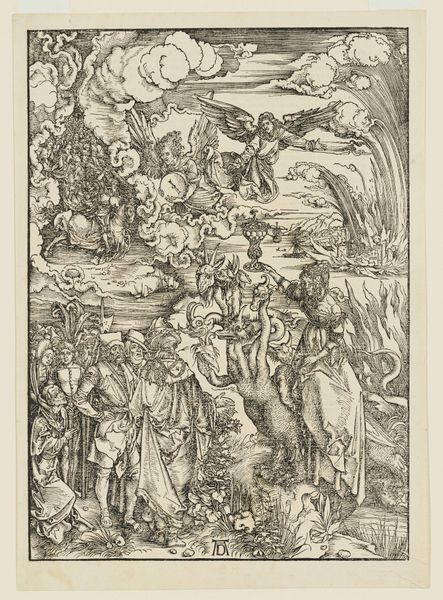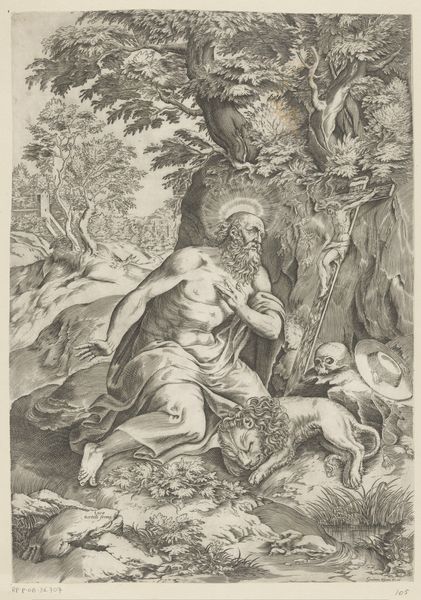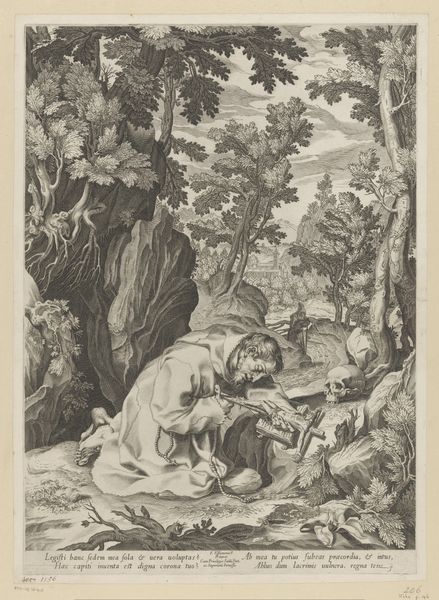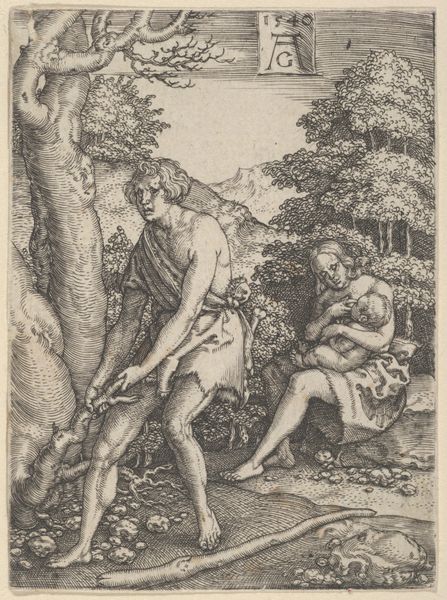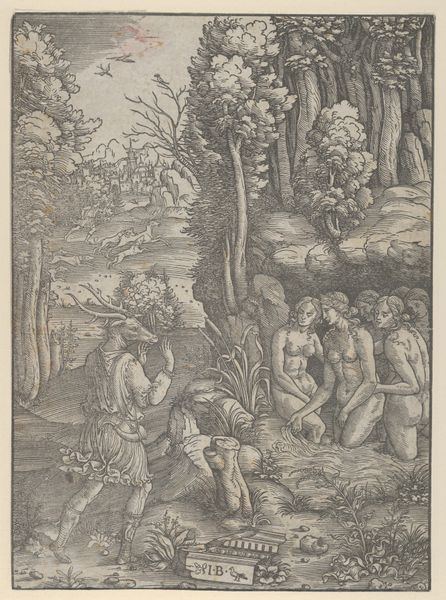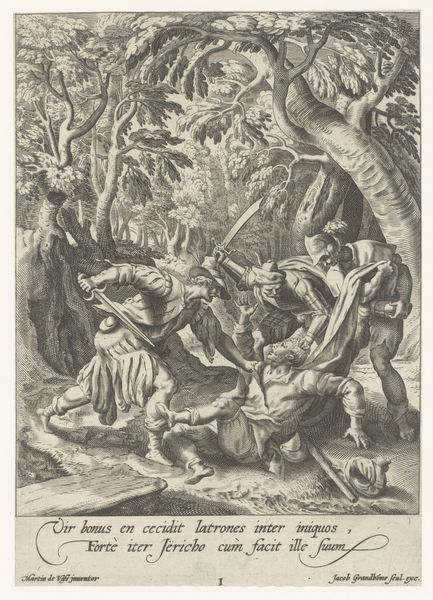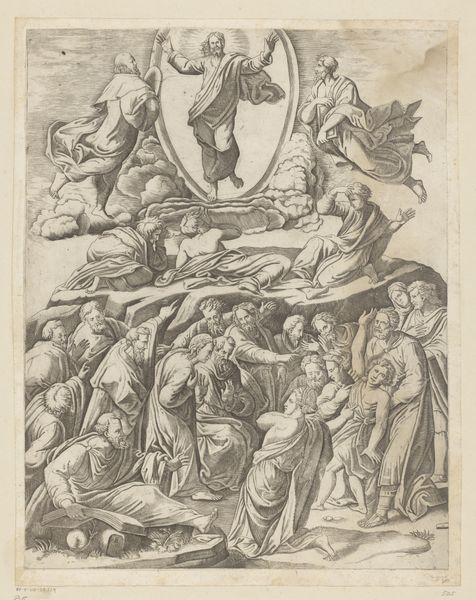
The Holy Family with John the Baptist in a landscape 1583
0:00
0:00
drawing, engraving
#
drawing
#
landscape
#
figuration
#
history-painting
#
italian-renaissance
#
engraving
Dimensions: Sheet: 16 in. × 11 3/16 in. (40.7 × 28.4 cm)
Copyright: Public Domain
Curator: Looking at this densely-packed composition, one is immediately struck by the textural contrast—the smooth drapery against the densely worked foliage. Editor: Indeed. The artwork we're observing is Bernardino Passeri's engraving, "The Holy Family with John the Baptist in a landscape," dating back to 1583, currently housed here at The Metropolitan Museum of Art. Passeri was working within a period of immense religious and social upheaval. The representation of the Holy Family isn't merely a depiction of piety; it’s deeply interwoven with contemporary discourses about the ideal Christian family during the Counter-Reformation. Curator: I agree that social context is a critical lens through which we need to explore the scene; I wonder though about how Passeri frames that understanding formally, and by formal, I mean through a deliberate contrast. The way the light delicately traces the forms creates almost an ethereal feeling despite the terrestrial subject matter. Editor: To that point, I'm curious if we read the maternal body differently when thinking of the role gendered expectations and ideals played at this historical moment. In art, the Virgin Mary becomes both an enforcer and embodiment of familial stability and patriarchal structure, almost representing a symbolic foundation during a time of enormous flux. The intimacy displayed through Mary's protective gesture and gaze becomes deeply embedded in larger questions of gender and societal roles, perhaps also alluding to both sacrifice and resilience. Curator: That's a perceptive reading. I do think the overall composition draws one's eye upwards—perhaps to suggest the divine hovering just above. The rendering of space creates a tension between foreground and background that prevents the scene from ever being simply understood. Editor: And perhaps there, embedded in the foregrounded familial presentation are more complicated narratives regarding societal pressure and, indeed, performance. Considering it through this perspective illuminates aspects beyond just aesthetic accomplishment. Curator: Looking closely at the figures again I appreciate the complexity—formally and conceptually. I'm reminded that our encounters with art are always mediated through layers of meaning—social and symbolic. Editor: Absolutely. Ultimately, engaging with works like Passeri’s encourages an ongoing re-evaluation of art historical understanding.
Comments
No comments
Be the first to comment and join the conversation on the ultimate creative platform.



